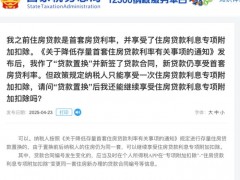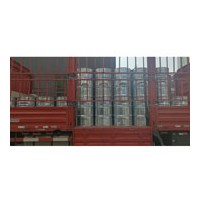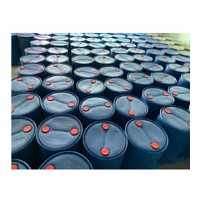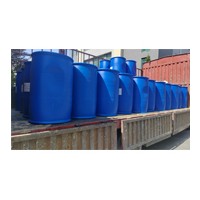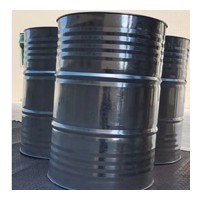- 个人理财业务新起点的深度分析 作者:林姗姗, 期刊-核心期刊 经济师CHINA EConOMIST 2008年 第11期 - 个人理财业务存在的问题及竞争策略 作者:龚中纯, 期刊-核心期刊 企业经济ENTERPRISE EConOMY 2004年 第10期 - 西方商业银行个人理财业务发展新趋势及其借鉴 New Trends and Revelation of Individual Financial Affairs Development of Western Commercial Banks 作者:凌江怀, 期刊 华南师范大学学报(社会科学版)JOURNAL OF SOUTH CHINA NORMAL UNIVERSITY(SOCIAL SCIENCE EDITION) 2004年 第04期 - 我国商业银行个人理财业务发展探析 作者:程晓华, 期刊-核心期刊 经济师CHINA EConOMIST 2004年 第08期 - 商业银行发展个人理财业务的难点及策略 作者:林阳发, 期刊 现代商业MODERN BUSINESS 2007年 第36期 - 网上银行发展个人理财业务初探 作者:姚海, 期刊-核心期刊 技术经济与管理研究TECHNOEConOMICS &MANAGEMENT RESEARCH 2002年 第02期 - 对商业银行个人理财业务监管的思考 作者:杨俊松, 期刊-核心期刊 金融与经济FINANCE AND EConOMY 2006年 第03期 - 我国商业银行个人理财业务探讨 作者:高孝欣, 期刊-核心期刊 长沙民政职业技术学院学报JOURNAL OF CHANGSHA SOCIAL WORK COLLEGE 2008年 第02期 - 美国注册会计师的个人理财业务 作者:华金秋,罗樱, 期刊-核心期刊 财会学习ACCOUNTING LEARNING 2008年 第09期 - 个人理财业务开展的国内现状研究 The Study of the Civil Present Condition of the Development of Personal Financial Management Business 作者:蔡汉明,徐艳玲, 期刊 武汉理工大学学报(社会科学版)JOURNAL OF WUHAN UNIVERSITY OF TECHNOLOGY(SOCIAL SCIENCE EDITION) 2004年 第05期 - 个人理财业务的发展现状、前景与策略分析 作者:姜晓兵,罗剑朝,温小霓, 期刊-核心期刊 生产力研究PRODUCTIVITY RESEARCH 2007年 第03期 更多请浏览 易起论文网 www.17net.net
我是金融工程专业学生,现在论文选题了,但是我不知道选哪类的题目合适,不能太小,不能太大,还要创新
[2]:家庭投资理财ABC柯静时代金融 2004年第11期
[3]:家庭投资理财之我见 董雪梅金融理论与教学 2003年第2期
[4]:家庭投资理财之道 薛韬国际市场 2001年第11期
[5]:家庭理财与保险投资 张勤朴上海保险 1998年第08期
[6]:庄乾志,刘光伟.家庭投资指南,石油工业出版社.2005.6
浅议我国居民个人应如何进行投资理财规划毕业论文怎么写
这些都只是选题领域,如果直接选都有点泛了,建议你选一个最感兴趣的题目作为选题方向,然后广泛阅读这个领域的文献,了解该领域国内外研究动态,最终选一个别人没有研究或者别人已经研究了但你有新方法、新数据(新资料)的小问题作为切入点选题作为论文题目。
哪能找到个人理财的外文文献?(最好带翻译的)
你的浅议我国居民个人应如何进行投资理财规划论文准备往什么方向写,选题老师审核通过了没,有没有列个大纲让老师看一下写作方向?
老师有没有和你说论文往哪个方向写比较好?写论文之前,一定要写个大纲,这样老师,好确定了框架,避免以后论文修改过程中出现大改的情况!!
学校的格式要求、写作规范要注意,否则很可能发回来重新改,你要还有什么不明白或不懂可以问我,希望你能够顺利毕业,迈向新的人生。
1、论文题目:要求准确、简练、醒目、新颖。
2、目录:目录是论文中主要段落的简表。(短篇论文不必列目录)
3、提要:是文章主要内容的摘录,要求短、精、完整。字数少可几十字,多不超过三百字为宜。
4、关键词或主题词:关键词是从论文的题名、提要和正文中选取出来的,是对表述论文的中心内容有实质意义的词汇。关键词是用作机系统标引论文内容特征的词语,便于信息系统汇集,以供读者检索。 每篇论文一般选取3-8个词汇作为关键词,另起一行,排在“提要”的左下方。主题词是经过规范化的词,在确定主题词时,要对论文进行主题,依照标引和组配规则转换成主题词表中的规范词语。
5、论文正文:(1)引言:引言又称前言、序言和导言,用在论文的开头。 引言一般要概括地写出作者意图,说明选题的目的和意义, 并指出论文写作的范围。引言要短小精悍、紧扣主题。〈2)论文正文:正文是论文的主体,正文应包括论点、论据、 论证过程和结论。主体部分包括以下内容:a.提出-论点;b.分析问题-论据和论证;c.解决问题-论证与步骤;d.结论。
6、一篇论文的参考文献是将论文在和写作中可参考或引证的主要文献资料,列于论文的末尾。参考文献应另起一页,标注方式按《GB7714-87文后参考文献著录规则》进行。中文:标题--作者--出版物信息(版地、版者、版期):作者--标题--出版物信息所列参考文献的要求是:(1)所列参考文献应是正式出版物,以便读者考证。(2)所列举的参考文献要标明序号、著作或文章的标题、作者、出版物信息。
Are you investing in the right industry?
Does the term book-to-bill ratio sound familiar to you? Do you know the demand and supply numbers of private condominiums in Singapore for the next year ? If you do, you must have already performed some sort of industry analysis on the electronics and property industries (or sectors as commonly referred to in stockmarket terms).
Most investment processes include some sort of industry analysis. This is important because many studies have shown that over a period of time, some industries have per-formed better than others. For example, between 1987 and 1996, banking stocks in Singapore have generated better returns than other industries such as shiprepair. Industry analyses will uncover these performance differences and help identify both unprofitable and profitable opportunities
(situations).
It is also important to note that past performance alone will not help predict future performance. The factors or conditions that helped an industry to prosper in the past will change over time. Identifying and studying these factors will provide some clues to the entry and exit points of the investments. Going back to our earlier example, economic growth is an important criterion for banks' earnings. Between 1987 and 1996, Singapore enjoyed an uninterrrupted average GDP growth of 8.9%. This allowed the banks' earnings to grow at a compound rate of 11.3% when the broader market generated only 8.5% growth. With GDP growth decelerating because of the Asian crisis, can we maintain the same sanguine outlook for the banks?
Having determined that industry analyses are important for successful investing, the next step is to find out how we can go about doing one. There is no generic framework that is applicable to all industries, but there are commonalities which we can identify. In a free market economy, demand and supply are key determinants of price, and price is always an important contributor to any profit-driven organisation. Hence, a successful indstry ana-lysis will have to identify the underlying fac-tors driving demand and supply.
Factors that drive demand vary across industries, and are too numerous to list. However, it is important to note that demand can be categorised as "seasonal", "cyclical" or "secular". As the word suggests, seasonal fac-tors recur year after year. Cyclical factors, on the other hand, follow
very closely to the economic cycles of the market. Secular factors are more long term in nature. Seasonality or economic cycles will have minimal impact on secular trends.
Take an airline as an illustration. Most Singaporeans take their vacation in December. That is why airline seats are difficult to secure during that time. This is the seasonal factor because it occurs every year around the same time. Having said that, Singaporeans usually take vacations more frequently when the economy is doing well, and less so during reccessionary times. The rise and fall in demand in accordance to economic activities is the cyclical factor. Finally, the middle class population in Singapore has been rising over the last 20 years. This group is generally more affluent. Part of the lifestyle usually includes taking regular vacations to exotic destinations. Such lifestyle doesn't change annually, nor does it follow the ups and downs of economic growth. The demand for air travel will grow so long as the middle class population continues to
increase. This is an example of secular demand.
Classifying demand factors into these categories is very useful. As long-term inves-tors, we do not want to be constantly reacting to signs that are short term and volatile in nature such as seasonal, and to a lesser extent, cyclical trends. Buying and selling stocks based on these short-term trends are not only expensive (brokerage cost) but difficult to time as well. Instead, we should focus on long-term trends. They usually have a longer and more permanent impact on share prices.
A key factor in identifying an attractive industry is pricing power. The ability of an industry to price its product at a profitable level without compromising its business pros-pect is important, and this is affected by many factors. Inelastic demand allows the tobacco producers to maintain good profits despite the rapidly rising tariffs all these years. Barriers to entry is another factor. Mobile-phone charges used to be very expensive because there was only Singapore Telecom providing the ser-vice (monopoly). With increased competition from M1, rates have been declining gradually. All things being equal, the more competitive the industry is, the lower the pricing power, and hence profits. Competition may be good for the consumers, but it seldom benefits the shareholders. Another factor that will impact the com-petitive environment of an industry is the cost structure. In general, indsutries with high fixed costs are more competitive than those that have high variable costs. We often hear about coun-tries being accused of 'dumping steel' onto other countries. Well, this is the case in point. Steel mills are expensive to construct. But once built, the investment costs are 'sunked'. On the other hand, the running cost to produce steel is relatively low. Since there are so many steel mills around the world (almost every country has one for strategic reasons), supply is in abundance. As competition intensifies in the global market, recovering investment cost of the mills becomes a secondary objective for management. What is more important is to keep the production ongoing and sell the steel at a price that can at least cover the variable cost component. These mills will definitely be loss-making, but at least they can continue to operate and not generate serious unemploy-ment for the economy (steel industry is very labour-intensive). Having looked at the fundamental issues, do we always buy into an industry with positive trends developing? The answer is 'no'. Con-fused? Here is why. The key to any successful investments is to stay ahead of what the market is discounting. Suppose we are bullish on the outlook of the residential property sector because owning a home is every Singaporean's dream and the island has limited land supply. But this view is widely observable. Further-more, most of the residential property stocks have already outperformed the market by huge margins. These are signs that the market has probably discounted the positive conclusion of our analysis. As such, the investment upside is probably limited. Conversely, if our conclu-sion unearths new information from the gene-ral market, we may have discovered something interesting here. To confirm that we have a good find, check out the valuation to see if it is attractive. There are many valuation tools, but the commonly used ones are Price/Earnings (PE), Enterprise Value/EBITDA*, Price/Book(P/B), and Dis-counted Cash Flow (DCF). Make a cross-industry comparison as well as historical com-parison. Going back to our property example. If our conclusion is new to the market, the industry is trading at the lower end of its histo-rical PE band, and it is also very attractive on PE terms versus the other industries in Singapore...bingo! In conclusion, I would like to leave you with a brain teaser. Imagine this is 1996 and you are an investor looking at the Dynamic Random Access Memory (DRAM) industry: DRAM is a semiconductor chip used in most electronic products such as personal computers. The business is cyclical in nature because corporate and private consumption of PCs usually rises when the economy is doing well. There are, however, two secular trends that underpin the growth in the industry. First, more and more people are buying PCs for their home and oiffice. Second, the requirement of DRAM per PC is also on the rise as processing power of computer increases exponentially. On the competitive issue, the cost to build a wafer fab is extremely high (about US$1b), and the technology is usually state-of-the-art. Besides capital and technology, there are no other significant barriers to entry. Margin for the industry had been very good because of supply shortage. This probably explained why share prices outperformed the market in 1995. The historical five-year PE band for selected stocks in the industry between 1991 and 1995 was about 10 to 100. The average PE during the period was 30. The industry is currently trading at a PE in the low teens. Would you invest in this industry? (The writer is the Investment Manager of Jardine Fleming Investment Management. This column has the support of the Investment Management Association of Singapore and the Stock Exchange of Singapore.)
到这个网站上去看一下,有这篇文章的翻译,此外还有许多商务英语论文
http://www.lunwenwang.com/Article/eng/biz/200510/26337_2.html
以上就是关于求关于如何理财论文的参考文献全部的内容,如果了解更多相关内容,可以关注我们,你们的支持是我们更新的动力!



















